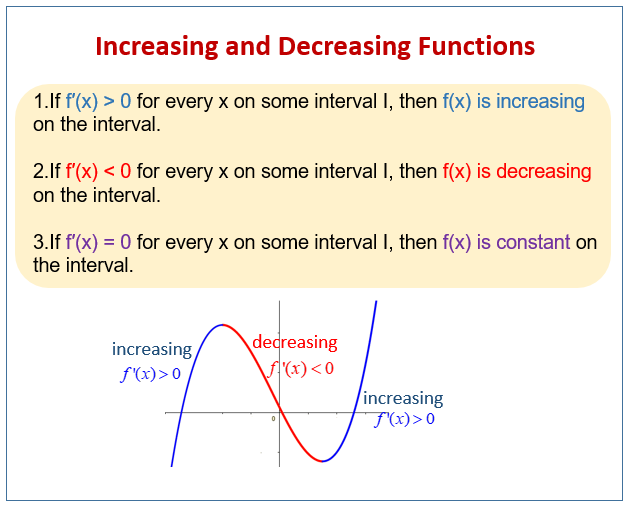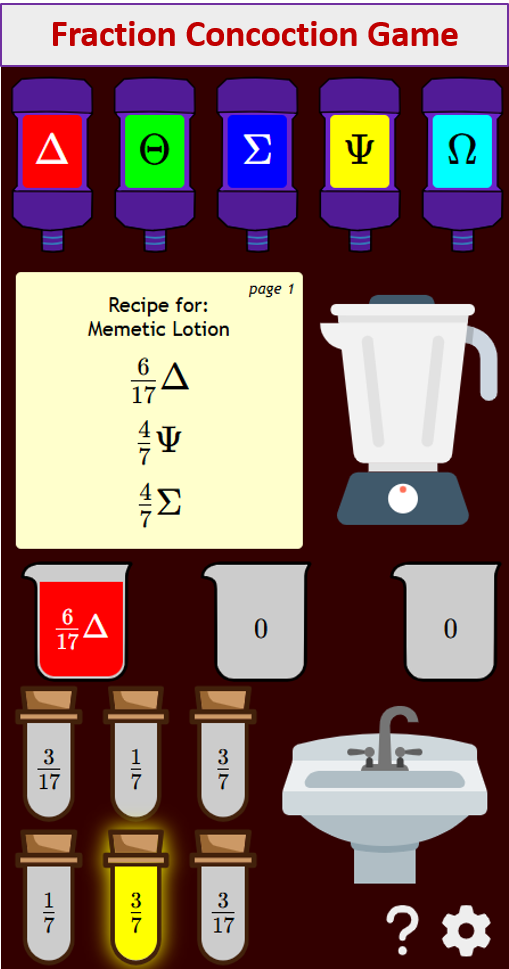

Increasing and Decreasing Functions
Related Topics:
More Lessons for A Level Maths
Math Worksheets
Examples, solutions, videos, activities, and worksheets that are suitable for A Level Maths.
How to find a range of values of x for an increasing or decreasing function?
The following diagrams show how to determine the range of values of x for an increasing or decreasing function. Scroll down the page for more examples and solutions on increasing or decreasing functions.
This tutorial shows you how to find a range of values of x for an increasing or decreasing function.
Example:
Find the range of values of x for which y = x3 + 5x2 - 8x + 1 is increasing. Increasing Functions and Differentiation
Example:
For what values of x is y = 150x - 2x3 an increasing function?
Core 2 - Differentiation (1) - Increasing and Decreasing Functions
Decreasing Functions : C2 Edexcel June 2010 Q3
Example:
y = x2 - k√x, where k is a constant.
(a) Find dy/dx
(b) Given that y is decreasing at x = 4, find the set of possible values of k. Increasing and Decreasing Functions and Stationary Points Stationary points, Increasing and Decreasing Functions Revision guide
Examples:
1. Prove that the curve y = x3 + 3x2 + 3x - 2 has only one stationary point. Show that the stationary point is a point of inflection.
2. Show that the curve y = 4x - x4 has only 1 stationary point. Determine the nature of this point.
3. Show that y = 1/3 x3 - 3x2 + 10x - 2 is an increasing function for all values of x.
4. For what values of x is y = x3 - 3x2 + 5 a decreasing function?



More Lessons for A Level Maths
Math Worksheets
Examples, solutions, videos, activities, and worksheets that are suitable for A Level Maths.
How to find a range of values of x for an increasing or decreasing function?
The following diagrams show how to determine the range of values of x for an increasing or decreasing function. Scroll down the page for more examples and solutions on increasing or decreasing functions.

This tutorial shows you how to find a range of values of x for an increasing or decreasing function.
Example:
Find the range of values of x for which y = x3 + 5x2 - 8x + 1 is increasing. Increasing Functions and Differentiation
Example:
For what values of x is y = 150x - 2x3 an increasing function?
y = x2 - k√x, where k is a constant.
(a) Find dy/dx
(b) Given that y is decreasing at x = 4, find the set of possible values of k. Increasing and Decreasing Functions and Stationary Points Stationary points, Increasing and Decreasing Functions Revision guide
Examples:
1. Prove that the curve y = x3 + 3x2 + 3x - 2 has only one stationary point. Show that the stationary point is a point of inflection.
2. Show that the curve y = 4x - x4 has only 1 stationary point. Determine the nature of this point.
3. Show that y = 1/3 x3 - 3x2 + 10x - 2 is an increasing function for all values of x.
4. For what values of x is y = x3 - 3x2 + 5 a decreasing function?
Try out our new and fun Fraction Concoction Game.
Add and subtract fractions to make exciting fraction concoctions following a recipe. There are four levels of difficulty: Easy, medium, hard and insane. Practice the basics of fraction addition and subtraction or challenge yourself with the insane level.



We welcome your feedback, comments and questions about this site or page. Please submit your feedback or enquiries via our Feedback page.